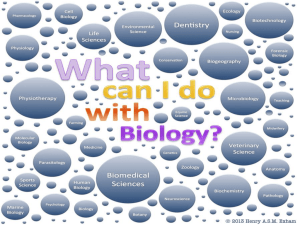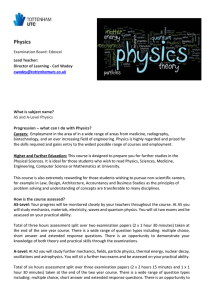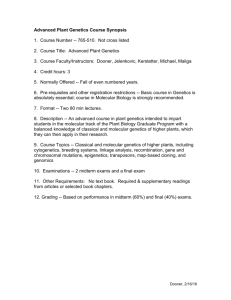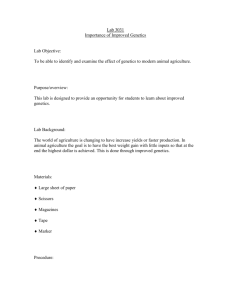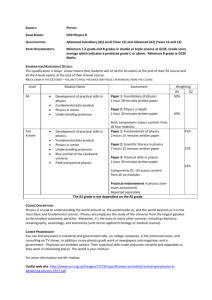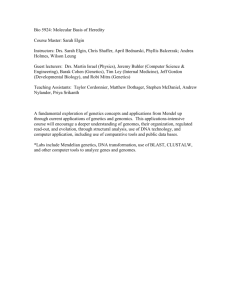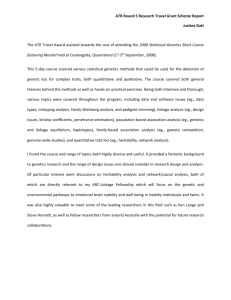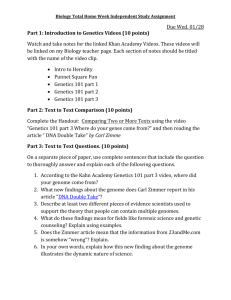Biology-subject-presentation-2015
advertisement
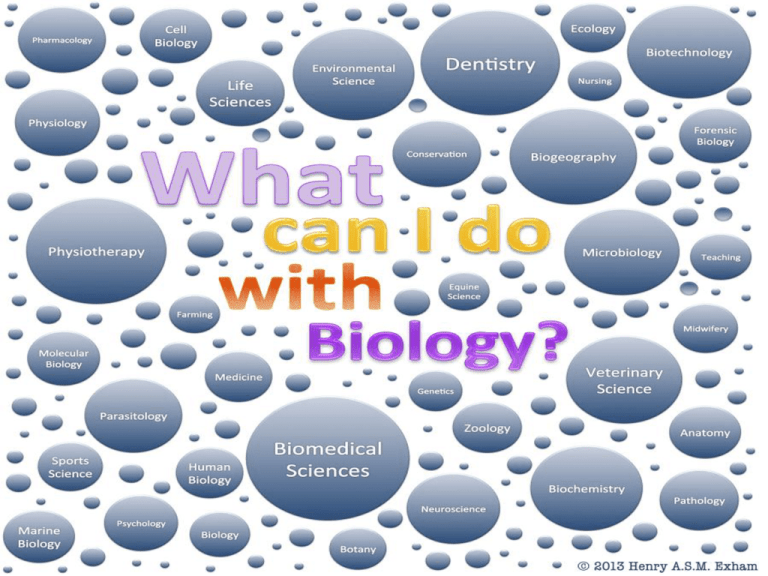
Requirements Grade B at GCSE in Additional Science OR Biology C in English Language C in Maths on the Higher paper Our results Summer 2014 • 100% of students achieved a grade in A2 biology (45 students) • 31 % achieved grade A or A* • 55% achieved grade A*-B Work load and help • Usually 2 teachers; 1 for 3 hours (this may be split into a 1 hour) and 2 hour lessons and 1 for 2 hours per week • We expect you to do approximately 2-3 hours of work per week out of school • Internal assessment after every topic • Class sites on the MLE with web links, power points and past questions • Lots of practicals • A text book can be bought at a significantly reduced price of £10 in September • Sell revision guides at a discount price • Offer drop in sessions for help to all • Are available for 1:1 assistance when needed • We will contact parents if we have concerns Specification at a glance Subject content 1. Biological molecules 2. Cells 3. Exchange 4. Genetics 5. Energy transfer 6. Responding to change (Homeostasis) 7. Population genetics 8. Control of gene expression AS : 2 exams units 1-4 on both papers 1 hour 30 mins each paper A-level : 3 exams, 2 hours each paper 1 units 1-4 paper 2 units 5-8 paper 3 units 1-8 including practical skills plus an essay. Practical Skills • A bigger emphasis on practical skills through the course. • 12 mandatory practicals, which are teacher assessed. • 15% of paper 3 for A-level will draw on the skills gained throughout the course. (at AS it is assessed in paper 2). • Students will be awarded a pass or fail for practical skills, a pass will be shown on their final certificate. Mathematical skills and handling data • At least 10% of the marks will require the use of mathematical skills and will be at least the standard of higher tier GCSE maths. • Most of these will be in the first year. • E.g. ratios, percentages, rearranging equations, rates, geometry. Specification Unit 1 Biological molecules Content; proteins, enzymes, carbohydrates, lipids, nucleic acids (DNA, RNA), ATP, water, ions Unit 2 Cells Content; structure of eukaryotic and prokaryotic cells and viruses, magnification, transport across membranes, cell recognition immunity Unit 3 Exchange Content; gas exchange in insects, fish, mammals and plants, digestion, mass transport in plants and animals Unit 4 Genetics Content; DNA, chromosomes and genes, protein synthesis, meiosis, genetic diversity, taxonomy Unit 5 Energy transfers Content; photosynthesis, respiration, nutrient cycles, energy in ecosystems Unit 6 Responding to changes Content; receptors, nerves, synapses, muscles, control of heart rate, blood glucose, kidney Unit 7 Population genetics Content; inheritance, evolution, ecology Unit 8 Control of gene expression Content; mutations, stem cells, epigenetics, cancer, genetic engineering, finger printing.
